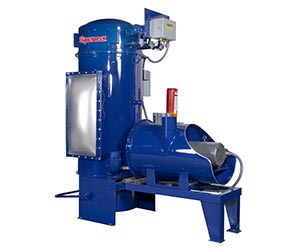Description
If your facility has potentially explosive dust, you must comply with new requirements.
Today’s tighter regulations and stricter codes for healthier, safer manufacturing environments mean you need to efficiently clean up potentially explosive dust.
Combustible dust accidents happen more often than you think, and OSHA will fine you if you are violating NFPA standards. If you have these dusts in your plant — wood, coal, toner, charcoal, plastics, coffee, sugar, flour, cotton, paper tissue dust, or other combustible dust particles — your facilities are at risk for a deflagration or explosion.
OSHA specifies a list of materials that may create a hazard. If you have any on the OSHA list – or any other potentially explosive dusts — a Dust Hazard Analysis (DHA) must be completed to ensure you properly identify them and mitigate all risk.
For OSHA’s list of materials, click here.
With the September 2018 deadline for complying with NFPA 652 / 654 fast approaching, you must complete a DHA as soon as possible. A certified testing laboratory will test for Kst (Deflagration Index for dusts or speed of pressure rise in bar-m/sec) and Pmax (Maximum Pressure Developed in an unvented vessel in bar or psi).
For list of DHA test facilities, click here.
Per NFPA 652 / 654, housekeeping is an approved method of keeping facilities clear of potentially explosive dust accumulations – meaning that quality vacuum cleaning equipment is key to compliance. Kst and Pmax data are required in order to design and install equipment and address housekeeping and explosion protection requirements. Spencer will use the data to review your situation and make recommendations.
Designs are preliminary until approved by the Authority Having Jurisdiction (AHJ), who will also be responsible for providing a risk analysis for the system.
Wood, coal, toner, charcoal, plastics, coffee, sugar, flour, cotton, paper tissue dust, or other combustible dust particles – even a thin layer – can be hazardous. According to NFPA 652 / 654, a layer of dust no thicker than a dime on facility floors and horizontal surfaces such as ducts, pipes, hoods, ledges and beams need to be handled properly to be safe.
Our engineering team specializes in designing systems that pick up whatever potentially explosive dust you handle and address your specific housekeeping requirements. The most important data needed to design a compliant system are your Kst and Pmax numbers. We use this data to incorporate explosion-proof (XP) features to help mitigate risk. Critical criteria including the number of operators at one time, facility layout and equipment location enable us to fully customize your system to your needs.

